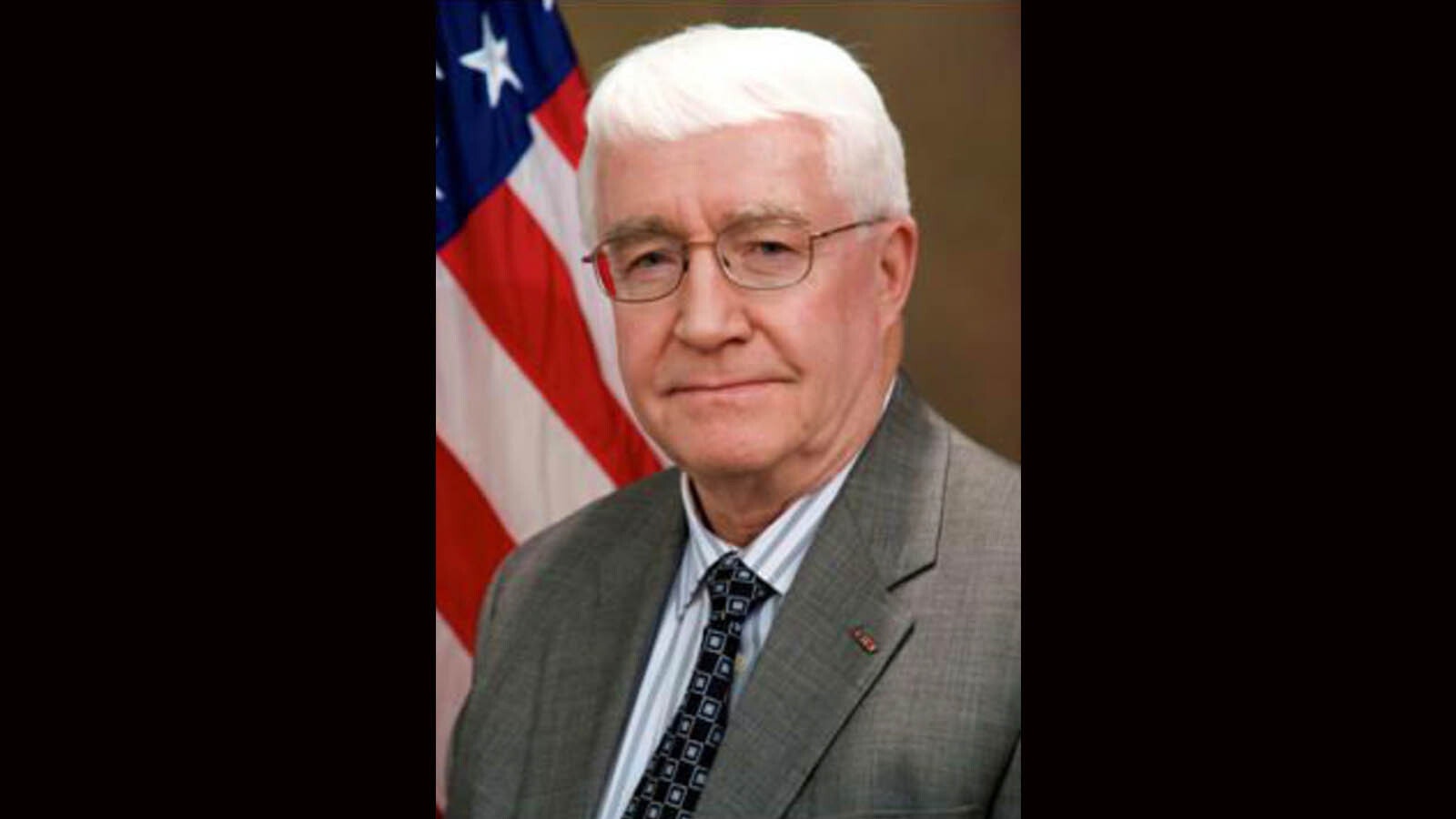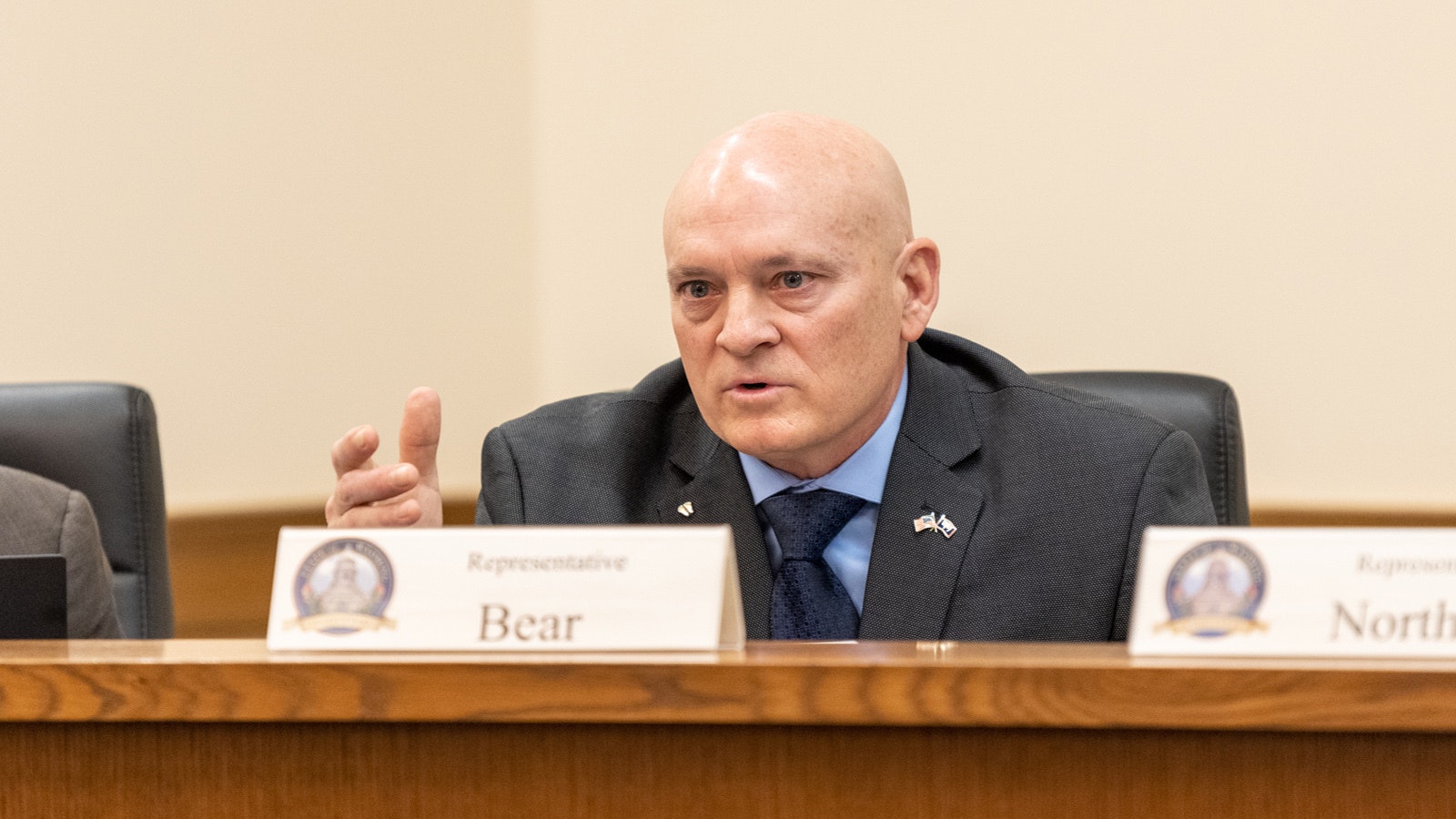By C. A. “Kip” Crofts
Former U.S. Attorney for Wyoming
One of the things announced by President Biden in his April 6 press conference was his assertion that the Justice Department would within 60 days issue a rule to make clear that when a device marketed as a stabilizing brace effectively turns a pistol into a short-barreled rifle subject to the requirement of the National Firearms Act it will be regulated by the NFA.
Apparently this new policy was a result of the recent shooting in the grocery supermarket in Boulder, Colorado, where news reports indicate that such a device was used by the killer.
It is difficult to express in words exactly what those devices are and how they work, and the legal issues are complex.
To my knowledge, no such device has ever been used in a mass shooting before, or at least its usage has not been publicized, so this is clearly not a huge or prevalent problem. But, as with everything else related to guns, politicians “must always take advantage of every tragedy for political gain.”
History of the NFA
In 1934 Congress passed the first major legislation having to do with the regulation of guns. It was called the “National Firearms Act” (NFA)and apparently was in response to an increase of crime arising from the era of Prohibition, when criminals with well known names like John Dillinger, Pretty Boy Floyd, Machine Gun Kelly and others were roaring (“Roaring 20’s) around in fast cars, robbing banks and committing other mayhem. Frequently they used Thompson Submachine Guns, the “Tommy Gun” or “Chicago Typewriter” as they came to be called. Unsurprisingly then, the NFA regulated fully automatic machine guns.
This new federal law was passed before FDR, by threatening to “pack” the Supreme Court with justices who would approve of his “New Deal” ideas, persuaded the court that almost any new federal law he proposed could be constitutionally justified under the “interstate commerce clause.”
So thinking, as had always been the case, that most police powers belonged to the states, Congress made this new law part of Title 26, the Tax Code, and not part of Title 18, the Criminal Code. Thus, machine guns and other firearms regulated by the Act were not actually banned, but a tax provision was enacted that required buyers to apply for a tax stamp and pay a tax of $200 before they’d be allowed to possess the machine gun.
Nobody really intended to see a number of gun owners actually apply for the tax stamps and pay the tax. In those days, $200 was a lot of money, and clearly the intent was to make machine guns too expensive to own.
But as with all gun laws, the criminals against whom they are aimed tend to be people who ignore and violate laws routinely. It is unlikely that John Dillinger, planning a bank robbery, would tell his associates, “OK, boys. That’s the plan. Make sure you check to see you have the federal tax stamps for your Tommy Guns. We don’t want some federal revenue agent showing up in the middle of our robbery demanding to see our tax stamps.”
But the NFA also included some guns other than full auto machine guns. It covered short-barreled rifles and shotguns. Also requiring a tax stamp were rifles having a barrel less than 16 inches in length and shotguns having barrels less than 18 inches in length. It is not clear to me exactly what Congress was thinking, but apparently lawmakers were mainly concerned that such guns were easier to conceal.
The ability to conceal a firearm has been a factor in many gun laws. For years in most jurisdictions it was illegal to carry a gun of any kind concealed unless one had a permit from law enforcement. This has been changing in recent years and many states now allow concealed carry, with or without a permit. A few jurisdictions continue to forbid concealed carry, or make the permits impossible to obtain.
One can ask what is the effect of this? I suppose if bank robbers don’t want to be seen outside carrying guns, to avoid having a citizen call the police before they enter the bank, then they will conceal their guns. Supposedly some gangsters carried Tommy Guns in violin cases.
But, as with all other gun laws, they mostly applied to law-abiding people. Does anyone think a gangster, intent upon robbing a bank, will hesitate to conceal his gun while walking down the street because of some law? That is a bit like thinking that a person intent upon shooting up a school will be deterred by a law that says schools are “gun free zones.”
But pistols are clearly easier to conceal than any rifle or shotgun, including those illegal ones with barrels shorter than are specified in the NFA, so why would it even matter? Even a short-barreled shotgun or rifle could not be readily concealed unless the person carrying it was wearing a long trench coat or something. And why did Congress specify 16 inches for rifles, but 18 for shotguns? The law seems kind of silly on its face.
And it is very easy for anyone with a hacksaw to cut a few inches off his shotgun or rifle barrel, so this is not a law that can be effectively applied to licensed manufacturers or dealers.
Today’s Problem
The current problem arises because the NFA defines a “rifle” as “a weapon designed and intended to be fired from the shoulder.” No one defined a “pistol” or “handgun” in the NFA, because they were not affected. But later Congress did adopt a statutory definition of “handgun” as “a firearm which has a short stock and is designed to be held and fired by the use of a single hand.”
That definition is problematic by itself. It used to be that soldiers and police were trained to hold a handgun with one hand, often advised to keep the other hand in a pocket. But modern training and practice teaches the use of both hands on conventional handguns to have a steadier, more accurate hold on the gun, and you’d be hard-pressed to find anyone shooting a handgun today with only one hand.
So these laws collide in application to a special kind of gun that is the offspring of the “assault weapon” described in the 1994 ban that President Biden brags about fathering. The unintended consequence of that law was that it stimulated a whole industry of innovators and manufacturers working to invent and make guns similar to the Colt AR-15, but enough different from it to escape ban by the law.
One of those developments was the production of shortened versions of the typical AR platform – shorter on both ends, with a barrel shorter than 16 inches and no buttstock at all. Among the intended customers/users of these short little guns were wounded or disabled soldiers and others who wanted to shoot the guns, but because of amputation or injury had no ability to hold a rifle in the conventional way with both hands.
The guns were intended to be held by the pistol grip, with one hand, seemingly in compliance with the statutory definition of “handgun” provided just above. They could even be fired from a wheelchair.
But, as I said, Americans are creative folks, and soon people looking for a way to make one-handed shooting easier and more accurate came up with a way to brace the gun.
The AR-15 has a unique design feature that made this possible. Semi-automatic guns are semi-automatic because the gun loads and unloads itself, unlike, for example, a bolt action rifle that requires the shooter to manipulate the bolt with his hand, extracting and ejecting the fired round, and loading a fresh one from the top of the magazine.
Semi-automatics use the energy generated by the exploding cartridge to force the bolt back several inches, sufficient to extract the fired cartridge case, eject it from the gun, and perhaps cock the firing mechanism for the next shot. But then a spring is required to move the bolt back forward, stripping a new unfired cartridge off the top of the magazine and inserting it into the firing chamber of the gun.
In most traditional semi-automatic firearms, such as the old M-1 Garand, this spring is housed in the front part of the rifle, in front of the bolt, and the spring is connected to the bolt by a rod that extends back from the spring to the bolt inside the wooden stock that you see.
The aircraft engineers who designed the AR-15 decided, correctly, that it would be more efficient to put the spring directly behind the bolt so it could push it closed directly. And they were able to do this because they were working with a plastic stock, easily molded into any shape they wanted, unlike the old wooden stock on the M-1 and other conventional rifles. Those stocks were “bent” downward slightly behind the bolt to provide a comfortable grip for the firing hand and a place upon which the shooter could rest his cheek to look down the barrel through the sights. The shape of that stock did not allow the placement of a spring directly behind the bolt.
The spring is contained on the AR-15 (and the full auto M-16) within a buffer tube (which looks a bit like the tubes in which expensive cigars are sold) within the plastic stock so on a regular full-size rifle, it cannot be seen. The shooter resting his cheek on the stock can hear the spring and piston moving when he fires the gun.
So when the innovators decided to make the “handgun” they wanted, they cut off both ends of the gun. They shortened the barrel to less than 16 inches required by the NFA, but claimed the gun was no longer a “rifle” covered by the NFA, but was instead a “handgun.”
They also removed the buttstock, that is usually snugged up against the shoulder when a rifle is fired. But the buffer tube for the spring had to remain in order to move the bolt forward after firing. The standard buffer tube on a full-size AR-15 or M-16 is nearly 10 inches long. For pistols or carbines with telescoping stocks, that can be shortened, usually to about seven inches.
So creative people designed and manufactured various devices to attach to that metal tube that could be used to help “stabilize” the gun while firing it with one hand. The most common was simply a sort of half-circle of some metal or plastic that would be attached to the tube and would cradle from above the shooter’s forearm that was beneath the tube. In some cases a velcro strap, or a belt, might be used to actually fasten the tube to the forearm.
Some gun manufacturers made these for their guns and sold them with the devices attached. Other companies made the devices separately and sold them to be attached to a gun someone already had. The tubes are generally the same diameter and it was no problem making them fit.
Some people continued to make their own – they are that simple. And it’s impossible to say they are an integral part of the gun. They can be easily removed, and the gun fires with or without them.
Another variation of the devices that appeared was what looked a bit like the buttstock of a conventional rifle stock, at the end where it is normally snugged up against the shoulder when firing the rifle.
It also fastens on the buffer tube in some fashion, and is not an integral part of the gun. It can be snugged up against the shoulder, in much the same fashion as a conventional rifle, but because the buffer tube is shorter than a normal buttstock, the shooter’s face and eye will be closer to the bolt of the gun than with a rifle. It is possible to use the weak (left) hand to steady the forearm of the gun, and shoot it much like a rifle, even though it is technically much shorter on both ends than a convention rifle.
These innovations perplexed the Bureau of Alcohol, Tobacco and Firearms (BATF), the agency charged with administering the National Firearms Act and other gun laws, for several years. They asked, were these guns, with these devices attached, still under the definition of “handgun” — designed to be fired from one hand — or were they in fact rifles, with barrels shorter than 16 inches, that needed to be registered under the NFA.
And the two devices were not the same when it came to that determination, since the arm brace left the shooter firing with only one hand, albeit one that was braced a bit by the forearm, compared to the buttstock device that generally allowed the shooter to use both hands to hold the gun if he wanted to.
BATF went back and forth about this issue, and at various times has offered advice to the industry and shooters about how to treat the matter. At one time they said it depended on the shooter’s actual usage, and told them if they actually used the weak hand to hold the gun with both hands, it was a rifle that needed to be registered.
But this advice was, of course, not capable of any kind of actual enforcement. You’d need BATF agents at every shooting range, and in every hunting venue, to observe how the devices were actually used. BATF quickly recognized how silly and impossible this was, and abandoned the effort.
That was the state of the law when the wacko decided to take one of these short guns, apparently with an arm brace attached, to the grocery market in Boulder and kill people. I have not seen any news information as to whether the shooter actually used the device or how — whether he had both hands on the gun or just one.
A Fool’s Errand
But those news stories brought the issue to the attention of politicians and President Biden, and once again not wanting to waste a tragedy, he decided to order the Department of Justice to write some new rules to cover this.
I’d hate to be the DOJ or BATF lawyer who gets that job. It is an impossible task. You can’t say a handgun is now a rifle just because some device that can be easily removed is attached to it. And you can’t say the device itself can be regulated, because it clearly is not a firearm.
The devices themselves may or may not be manufactured by the company that made the gun. There are many companies that make them, but not guns. And anyone reasonably handy with tools can easily fabricate one in his garage. You could just go buy a strip of velcro strap and tie your arm to the gun with it and you’d have a crude but workable equivalent.
Once again I think this is a silly fool’s errand with Democrats and our president, who want their base to think they are “tough on guns” without caring one whit whether the law actually accomplishes something.
As I said, I’ve never heard before about one of these gizmos being present in any criminal shooting, but if so, I ask “so what?” I suppose if you did a comparison test, you could determine that someone shooting one of these short little pistols could achieve slightly better accuracy with the devices than without. But there are so many variables involved I don’t know how that could be meaningful, or legally relevant.
Most mass shootings take place at very short range with large numbers of helpless victims, and pinpoint accuracy is not an issue. These are not sniper guns, with or without the devices, used for long range shooting.
But, if President Biden has his way, the original users of these devices, crippled veterans in wheelchairs, may find that they have to apply to BATF and pay a $200 tax to register … what? The short “handgun” that seemingly doesn’t meet the definition of a “rifle,” or the device itself, which is certainly not any kind of firearm?
I can’t imagine even the liberal Federal Courts of Appeal that think AR-15s are machine guns are going to swallow this nonsense, but we may have to go through the motions to find out.
But even that has its legal issues – the Second Amendment applies to “arms.” Is a velcro strap an “arm” entitled to Second Amendment protection. Maybe it is if you wrap it around your “arm.” (Sorry, but this is just so silly I’m having trouble restraining myself.)
Or is this just an administrative law issue – would such regulation be simply called “arbitrary and capricious” with no demonstrable purpose, and rejected on that basis?
No matter how they do it, surely the courts will throw this out and restrain themselves from outright laughter while they do it.
But who knows? Mass media coverage of these rare but terrible shooting events creates hysteria, and not all of it is within the place where the shooter does his evil.





